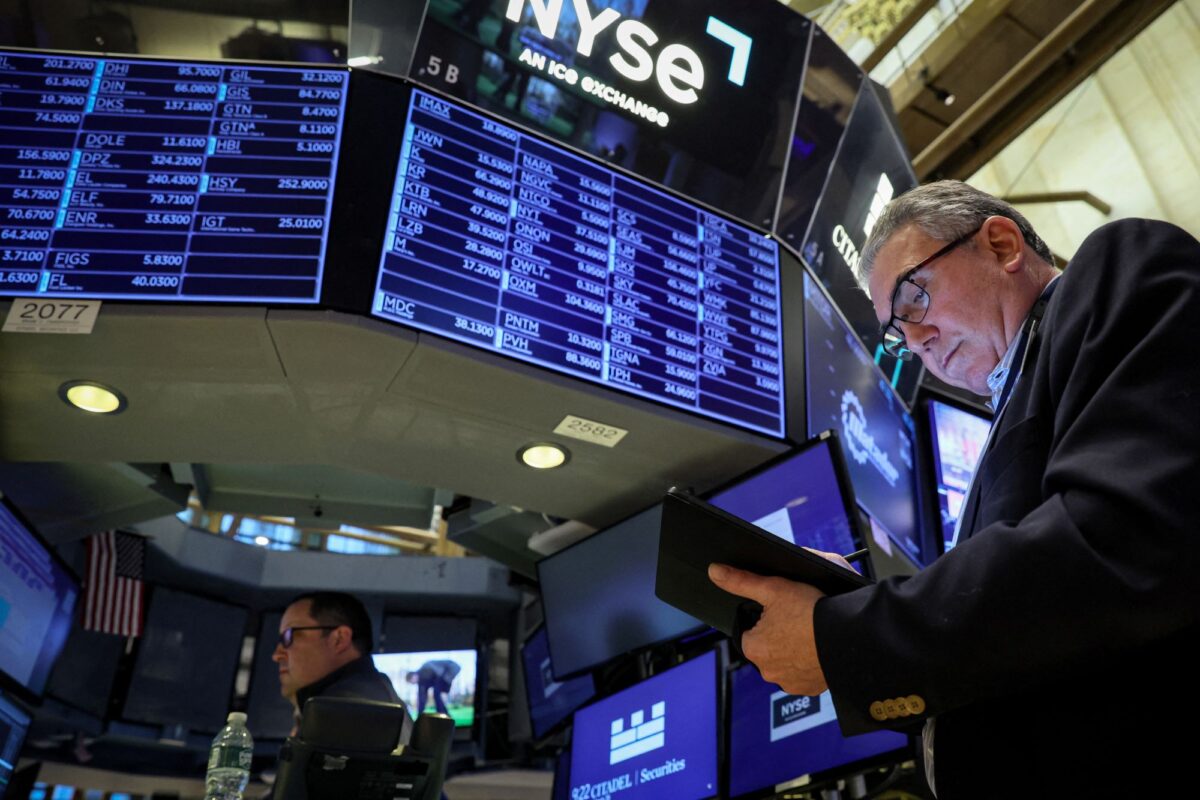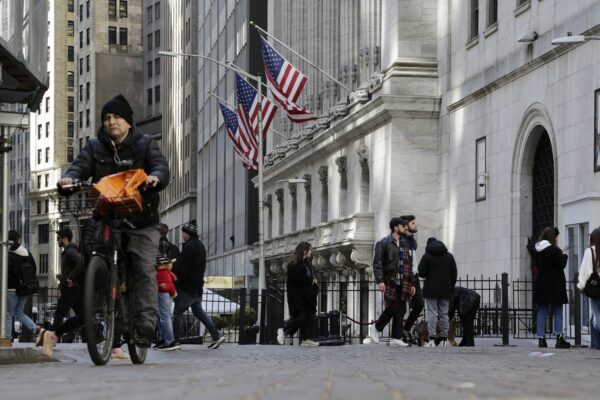


A credit crunch could worsen U.S. economic conditions, weighing on the stock market, according to financial experts.
The Federal Reserve warned in two publications—the Financial Stability Report and the Senior Loan Officer Opinion Survey on Bank Lending Practices—that a credit crunch is forming in the national economy as financial institutions tighten credit terms and consumer and business loan demand weakens. In addition, banking system stress, real estate pressures, and sticky and stubborn inflation are leaving the nation’s economic and financial health vulnerable.
Despite these concerns, the overall banking system “remained resilient,” the Fed reassured.
But this does not mean a recession can be ruled out.
“The credit crunch, or at least the credit squeeze, is beginning. I think you have to say that recession is a possibility,” Austan Goolsbee, president of the Federal Reserve Bank of Chicago, told Yahoo Finance on May 8.
Minutes from the March Federal Open Market Committee (FOMC) policy meeting indicated that central bank economists expect a mild recession later this year due to the fallout from the Silicon Valley Bank and Signature Bank failures.
Contracting credit conditions could be bad news for equities, warns Stoyan Panayotov, the fiduciary financial adviser and founder of Babylon Wealth Management.
“Historically, there has been a strong correlation between a credit crunch and worsening economic conditions, leading to a decline in stock prices and higher market volatility,” Panayotov told The Epoch Times. “During a credit crunch, banks and other creditors will impose higher restrictions on getting a loan asking for higher interest rates, more collateral, and higher credit score.”
While a credit crunch might not trigger a recession, the event “almost always drives higher market volatility.”
Panayotov thinks this is a unique situation because many businesses had become dependent on “cheap external financing” following a decade of ultra-low interest rates. As a result, businesses maintaining less debt, stronger balance sheets, and higher cash flows will be able to withstand the current climate.
That said, according to Scott Anderson, the chief economist at Bank of the West Economics, the downward pressure being applied on business and consumer loan growth amid tighter bank credit standards “so far appears relatively manageable.”
The Federal Reserve’s H.8 data suggest that loans and leases in bank credit from all commercial banks have remained steady in the fallout of the banking turmoil.
Regardless of the situation, it is not something policymakers can easily manage, especially during a hiking cycle, because credit contracts at a sluggish pace and then accelerates, says Ashish Shah, the chief investment officer of Public Investing at Goldman Sachs Asset Management.
“The evolution of credit contraction through the balance of the year is something we’re going to have to watch very carefully,” Shah said in a note.
Meanwhile, the concerns about the Federal Reserve overtightening could be realized as cracks in the financial system might emerge, Shah says.
“It’s also entirely possible that the Fed overtightened by 200 basis points compared to what is consistent with financial stability.”
Does this guarantee a pivot sometime this year?
Market analysts agree that it depends on how financial conditions shift and how the economy adapts to credit tightening.
Daniel Lacalle, a Spanish economist and author, recently shared data on Twitter that highlighted a trend of tightening credit followed by a decline in S&P 500 earnings per share (EPS).
“Will this time be different? Hardly,” he posted on Twitter.
David Rosenberg, the president of Rosenberg Research, warned in a recent interview that investors need to brace for a painful recession amid a 20 percent plunge in the S&P 500 and a worsening credit crunch.
“Now we have not just the cost of credit being a problem for the economy, but the availability of credit is going to compound that,” he stated in a Blockworks Macro interview. “It’s very difficult right now to gauge how deep this is likely to be.”
Rosenberg is not the only industry observer to warn about the tumbling stock market.
Morgan Stanley U.S. chief equity strategist Mike Wilson told Bloomberg last month that the S&P 500 could finish the year as low as 3,300. Stanley noted that the earnings situation is worse than the market consensus, and the banking stress is worsening broader conditions.
If these forecasts are accurate, this would represent a roughly 20 percent slide in the index.
So far, Refinitiv data suggest that earnings for the first quarter have been down about 2 percent from the first quarter of 2022. On the forward guidance front, Refinitv noted that there have been 31 negative announcements for the second quarter and 27 positive announcements.
“Interestingly, the dramatic improvement in Q1 earnings growth has not translated throughout the rest of the year, as Q2, Q3, and Q4 growth expectations have all declined marginally since April. Perhaps analysts are adopting a ‘wait-and-see’ approach before revising estimates any further,” wrote Tajinder Dhillon, a senior research analyst at Refinitiv.

